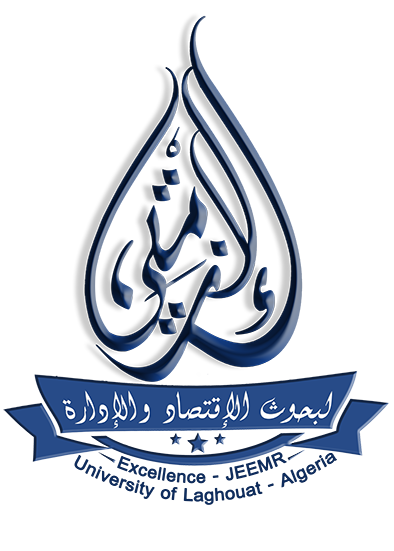Real exchange rate in countries exporting raw materials The case of Algeria
Abstract
This study aims at shedding light on the fundamental determinants of the real exchange rate in countries that rely on raw materials such as Algeria in an attempt to implement the Cashin et al's model during the period 1980-2016. Therefore, we will use the method of cointegration to determine whether there is a long-term relationship between the real exchange rate and its determinants.
The results showed that there is a long-term equilibrium relationship between the variables in the long term, as the differences in productivity and terms of trade proved statistically insignificant according to the model whereas the real oil price has a significant and negative impact on the real exchange rate, which confirms that the Algerian economy is a rental economy.
The error correction model (VECM) showed that the model was not accepted for the non-negative error correction coefficient, which means that there is no relationship between the model's variables in the short term.
References
السيد متولي عبد القادر، الاقتصاد الدولي: النظرية والسياسات، دار الفكر، عمان، الأردن،2010،
Xiang Ming Li, Trade Liberalization and Real Exchange Rate Movement, IMF working paper, WP/03/124,2003.
بلحرش عائشة، سعر الصرف الحقيقي التوازني ''دراسة حالة الدينار الجزائري''، أطروحة دكتوراه في العلوم الاقتصادية، تخصص نقود، بنوك ومالية بجامعة أبي بكر بلقايد، 2013-2014، .
Paul Cashin, Luis Cèspedes and Ratna Sahay, Keynes,Cocoa and Copper: In Search of Commodity Currencies, IMF working paper, wp/02/223,Decemner 2002.
Taline Koranchelian,''The Equilibrium Real Exchange Rate in a Commodity Exporting Country: Algeria's Experience'', IMF working paper, WP/05/35, July 2005.
كامل علاوي، كاظم الفتلاوي، حسن لطيف الزبيدي، القياس الاقتصادي: النظرية والتحليل، دار الصفاء، عمان،2014، .







